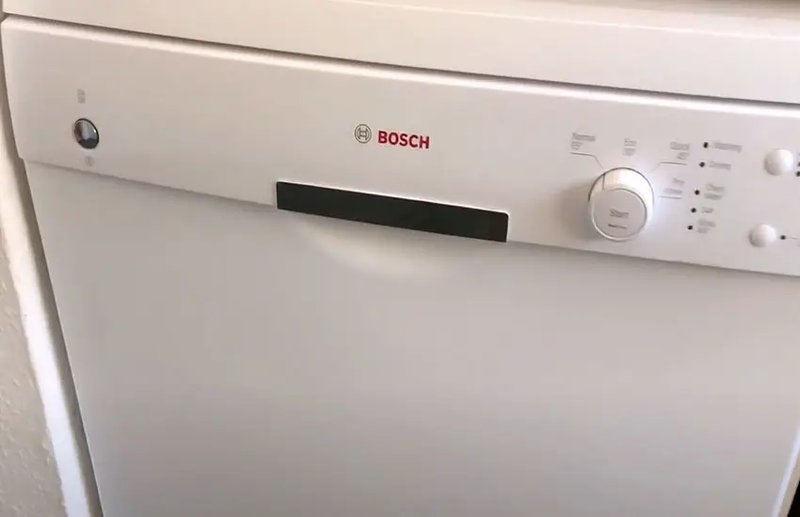
Think of the “LE” error code as a little red flag your dishwasher waves when there’s a problem with the water circulation or heating. When everything’s running smoothly, your dishwasher’s like a well-oiled machine, scrubbing away the day’s grime. But when it hiccups, much like when your car’s check engine light comes on, it’s time to troubleshoot. Fortunately, understanding these issues isn’t as daunting as it seems. With a little patience and some basic know-how, you’ll be able to tackle the most common causes of this error and hopefully get your dishwasher back to its sparkling best.
Understanding the “LE” Error Code
You might be wondering, “What exactly does this ‘LE’ error mean?” In the realm of Bosch dishwashers, the “LE” error code is generally related to problems with the motor, specifically the circulation motor. This motor is essentially the heart of your dishwasher, pumping water throughout the system to ensure efficient cleaning. When something goes wrong here, the appliance can’t perform its duties effectively.
Think of the circulation motor as a fellow at the helm of a waterpark pump, ensuring water flows smoothly and reaches every corner. If the pump malfunctions, the entire waterpark comes to a halt, leaving riders high and dry. Similarly, when the circulation motor encounters issues, your dishwasher stops in its tracks, often because it can’t get water moving where it needs to go. It might be due to electrical faults, mechanical failures, or even blockages—like when a hose in the park gets tangled or pinched.
To identify if the “LE” code is truly pointing to the circulation motor, listen closely to your machine. Unusual sounds like grinding, humming, or complete silence during the wash cycle can indicate where the issue lies. This is a good starting point to begin troubleshooting and figuring out the correct course of action.
Common Causes of the “LE” Error
One common culprit behind the “LE” error is a faulty circulation pump. Over time, parts can wear out, and the pump may fail to circulate water properly. This is like when the chain on your bike slips—if the pump’s components are misaligned or exhausted, it can’t push the water through. Regular maintenance can help prevent such wear, but if your dishwasher suddenly presents this error, a failing pump is often the prime suspect.
Electrical issues can also trigger the “LE” error code. If the wiring or connections to the circulation motor are compromised, the motor won’t receive the power it needs to function. Imagine a lamp that flickers because of a loose plug—the same thing happens when the motor’s power supply isn’t steady. Checking the wiring for frayed ends or loose connections is an essential step, akin to ensuring all lightbulbs are snugly fitted in their sockets.
Another potential issue could be blockages within the dishwasher’s system. Foreign objects, like food particles or broken glass, can obstruct the water’s path. This is much like a traffic jam caused by debris on the road—the water needs a clear, open route to circulate properly. Regularly clearing out the filter and cleaning the spray arms can prevent such blockages and ensure your dishwasher runs smoothly.
Steps to Resolve the “LE” Error Code
So, how do you go about fixing this mystery code? First off, always start with the most straightforward solutions. Check for blockages by inspecting the filter and spray arms—make sure they’re free from debris. Cleaning these components regularly can help avoid repeated issues. It’s like ensuring your garden hose is free of knots to keep the water flowing.
If the blockage isn’t the issue, turn your attention to the circulation pump and motor. Listen for strange noises during operation and consider inspecting the pump for visible damage. If you’re comfortable doing so, unplug the machine and use a multimeter to test the motor’s electrical continuity. This step is like checking your car battery before declaring it dead—sometimes, it just needs a jump start.
Lastly, if the problem persists despite your efforts, it might be time to call in professional help. Dishwashers are complex appliances, and a certified technician can conduct a detailed diagnostic, ensuring all components are in good working order. It’s like taking your car to a mechanic when that check engine light just won’t go off—they’ve got the tools and know-how to get things back on track.
Preventative Measures and Maintenance Tips
To keep the “LE” error at bay, regular maintenance is your best friend. Just like you brush and floss to keep cavities away, a bit of routine care can prevent many dishwasher woes. Start by cleaning the filter after every few wash cycles to remove any lingering food particles. This action helps maintain an unobstructed water flow.
Running a monthly cleaning cycle with a dishwasher cleaner can also be beneficial. This process helps remove grease and buildup that could impede water circulation over time. Think of it as giving your dishwasher a spa day—a thorough cleanse keeps it operating at peak performance.
Finally, always ensure your dishwasher is loaded correctly. Overloading or misplacing items can hinder spray arms from spinning freely, affecting cleaning efficiency. By balancing the load and following these easy maintenance tips, you can extend the life of your appliance and keep that “LE” error at bay. Remember, a well-cared-for appliance is a happy appliance!